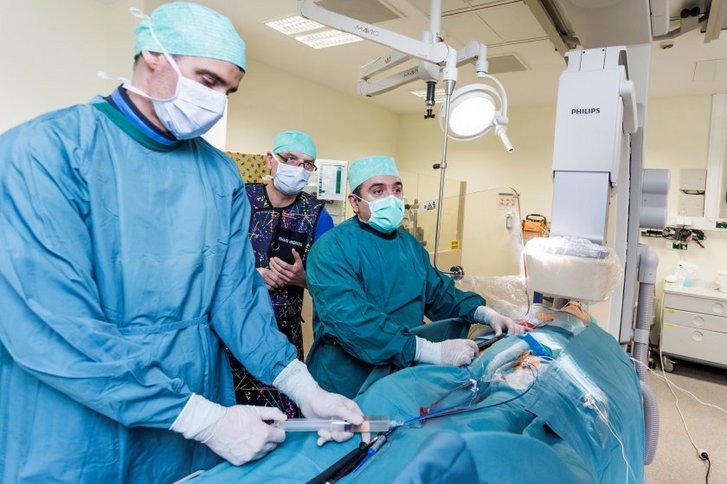The type of defibrillator which is implanted is usually an ICD implant (implantable cardioverter defibrillator). This helps to prevent dangerous cardiac arrhythmia, and can even protect you against sudden cardiac arrest.
In the Department of Rhythmology, we implant 500 pacemakers, 350 defibrillators and ca. 250 devices for cardiac resynchronization therapy every year in patients with heart failure; sometimes we do this in collaboration with the hospital's heart surgeons, depending on the individual needs of the patient. The Heart Center also specializes in the removal of infected or defective units or electrodes.

![[Translate to Englisch:] Einsicht ins EPU-Labor bei einem Eingriff im Herzzentrum Leipzig](/fileadmin/_processed_/8/2/csm_Rhythmologie_EPU_Tropf_8820_24592c3efb.jpg)
